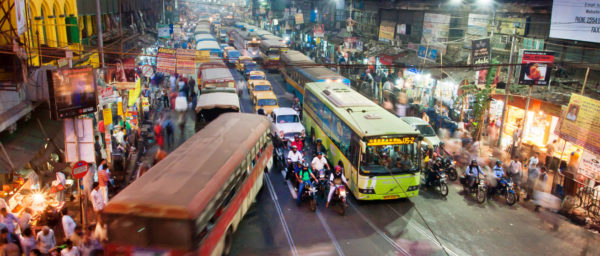Putting the Governance in ‘Smart’ Cities

Louise Reardon outlines some of the work of the programme UNDERstanding Indian Urban Governance REFORM: A Comparative Analysis of the Smart City Mission Reforms and Their Impact on Sustainable Urban Mobility. This blog is reposted from the project website.
Earlier this month I headed to New Delhi to learn more from national stakeholders about India’s Smart Cities Mission (SCM). Having now returned to the UK, unpacked and got over the jet lag, I reflect here on some of the key insights my trip afforded. In particular, I focus on the notion of smart invoked in discussions, and in turn, how the Mission itself reflects these understandings.
The academic literature has spent considerable effort defining what smart cities means and how the concept is applied. It was never one of the key goals of our project to contribute to this debate. After all, our focus is on understanding the implications of governance reforms that just so happen to be occurring under the banner of a smart cities programme. However, my conversations over the last few weeks have led me to the conclusion, at least in India’s case, that notions of smart and decisions on governance are inherently intertwined.
In discussing the aims of the Mission with stakeholders, I was struck by how infrequently technology and technological innovation are invoked as key smart tenets of the programme. This is not to suggest that technology is ignored, far from it. Technology is intended to play an important role on the ground in transforming cities. The idea being that more data leads to more evidence, and therefore better and smarter decision making. The implementation of command and control centres within cities is one such example of this.
Rather, it was striking because often appeals to technology are an easy go-to in discussing smart and what it means to create smart cities. However, what I found in New Delhi is a deeper, more governance-orientated interpretation of what smart means within the SCM, and indeed in its implications. At the heart of the Mission is the aim of making urban development and planning more smart in and of itself. However, this is not through technology per se, but rather through institutional changes. It is in changes to governance – where authority and the ability to exercise it reside – that the real smart transformation is to occur.
The competitive award process for Smart City status and the use of Special Purpose Vehicles (SPVs) to implement winning bids are the two key enablers for achieving this transition to Smart City status. While I had of course been aware that competition and SPVs were cornerstones of the Mission, I did not expect to find their logic couched in the notion of smart innovation as an explicit discourse.
To learn from the past is (hopefully) to become smarter. Learning from India’s previous attempts at urban reform is something that came through as shaping the SCM and in turn defining the smart way forward. For example, one of the key learning points identified in determining the need for the SPV model was the lethargy with which reforms were implemented at municipal level under the Jawaharlal Nehru National Urban Renewal Mission (JnNURM). Where multipurpose, capacity-limited Urban Local Bodies had previously been expected to implement reforms, now task-specific SPVs – private companies, with more ability to recruit staff with the necessary expertise – are to be given this responsibility. Moreover, in the past, where all cities would be given central government funding regardless of performance, competition between cities in the award of SCM funding is testament to the ethos that competition fosters ambition, with only those willing, ready and able to achieve being granted the opportunity to flourish with the use of central government funds.
The extent to which these changes will actually represent a smarter way of doing things in practice though remains to be seen as the Mission becomes implemented. The tensions between the Urban Local Bodies (accountable directly to the citizens they serve) and the SPVs (which do not have such accountability) are well recognised. The aim, it is said, is not for SPVs to usurp the role of elected Urban Local Bodies, but rather to come to be a kind of hands-off agency for the municipal level. To provide the capacity and ethos needed to implement and operate projects for which Urban Local Bodies do not have the ability. The level of tension between the two organisations will undoubtedly be context-dependent. It is in those localities where the Urban Local Bodies have worked closely with the state to develop and create the SPV that there will likely be better working relationships between the two (and meaningful reform flourishes), than in places where the Urban Local Bodies have been absent from the conversation.
However, as noted before, a key component of being smart, in my view, is the ability to learn from past experience. Part of me cannot help but wonder whether in creating the SPVs the capacity issues previously identified as a barrier to successful reforms will only be addressed in the short term. Once SCM funding subsides, and if political buy-in is not there at the local level, there is a danger that the SPV becomes an empty shell; another organisation layered on top of an already complex urban governance system. Hopefully our comparative research in four of the smart cities will be able to shed more light on the potential long-term implications of the programme and whether this concern is founded.
We are keen to develop and share this debate as broadly as possible. Please get in touch via the website, on Twitter @underreformor through one of our forthcoming presentations:
- World Conference on Transport Research Special Session, Mumbai – May 2019
- International Public Policy Association, Montreal – June 2019
- Royal Geographical Society Annual Conference, London – August 2019